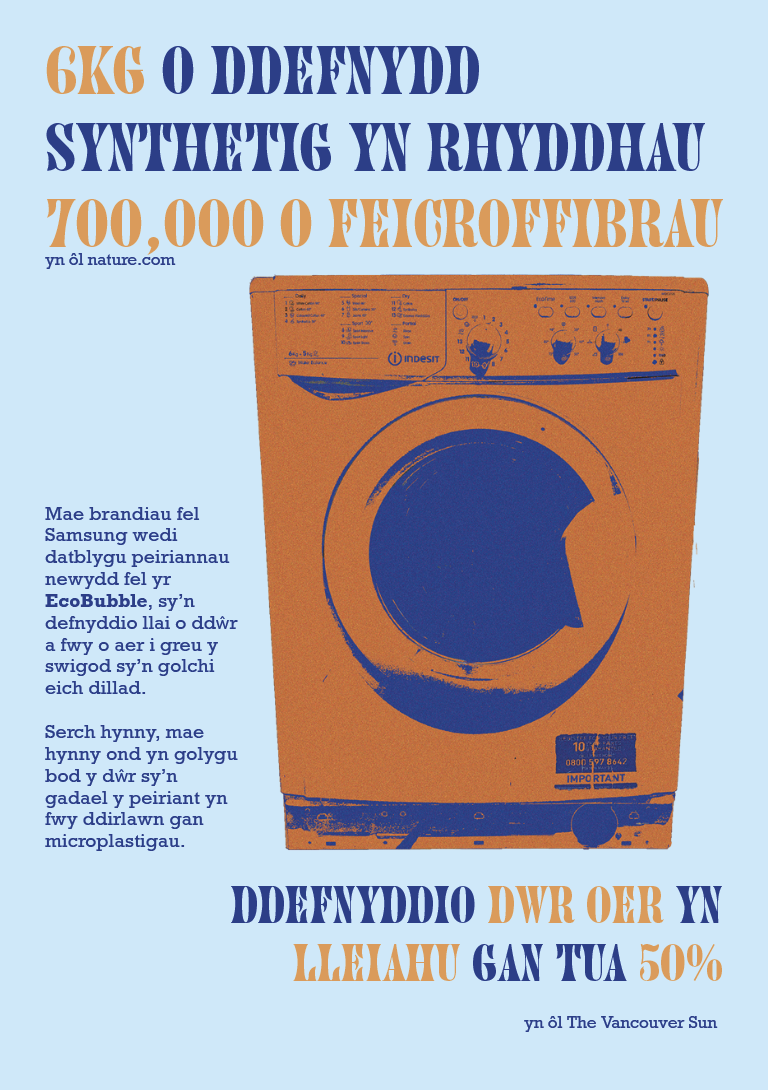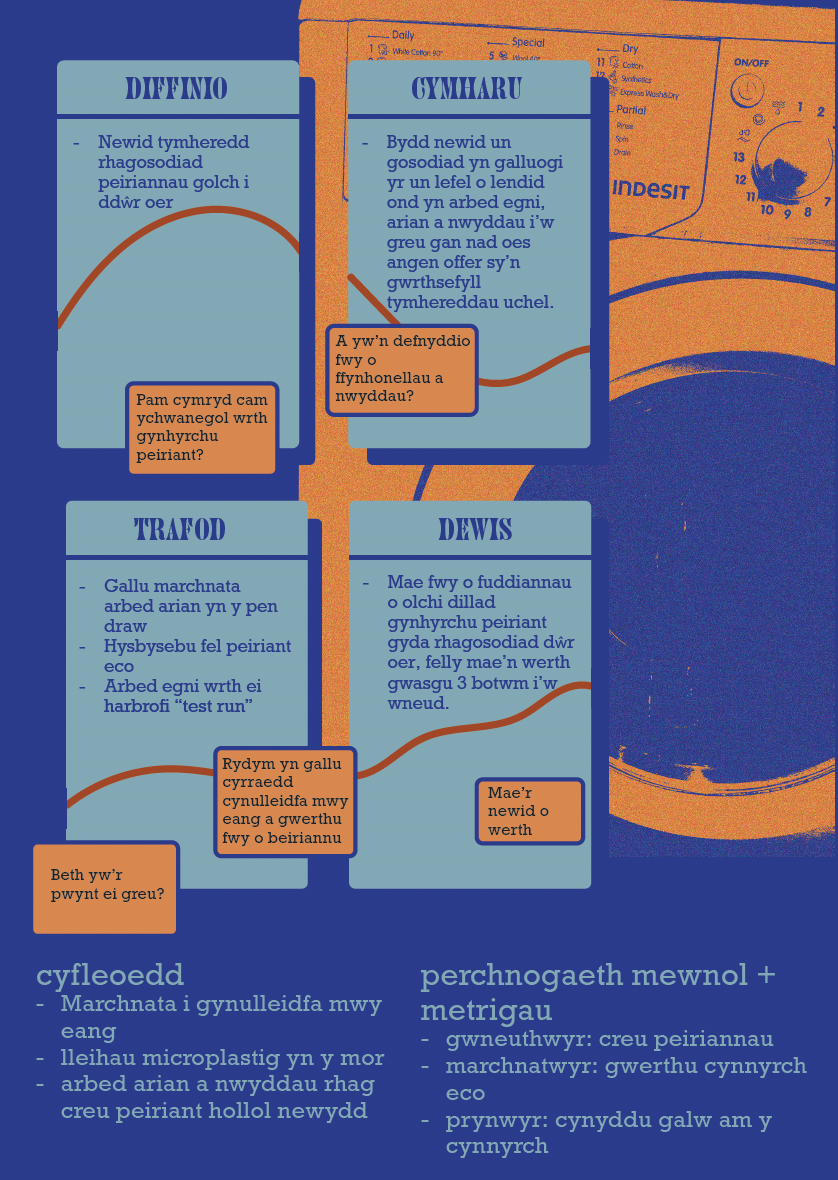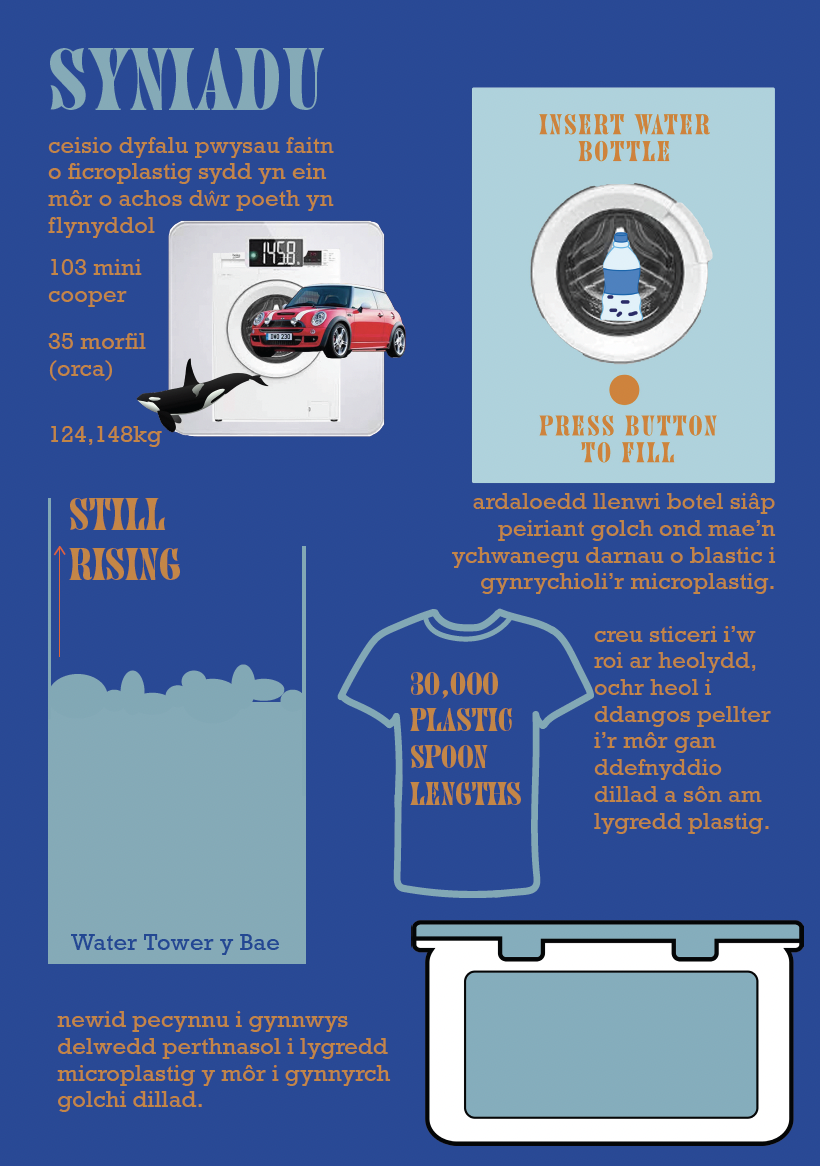Waves of Knowing
Behavioural Design
Brief: These brief exposes students to both affirmative and disruptive design methods. The context of the sea forms the basis of this design challenge. behaviour change might be in the form of policy change, political change, the design of a new service to prevent specific behaviours. You might re-design products for the circular economy in relation to plastic pollution in our oceans.

Outcome
My aim was to target a root of the rising amounts of microplastics that’s being washed away form our clothing, into the sea. To me, this meant implimenting a policy that all washing machines should be set at a default of 29C during manufacturing. Since the amount of microplastics emitted decreases drastically from the common washing temperature - 54C. My boards explore the journey of these microplastics, the daily impact this has on washing machine users as well as a method of how this policy would be implemented.
Disruptive Design
Brief: Disruptive design forces people to see things differently or co-opts existing design systems to enact change in an unorthodox manner. This brief also asks you to exhibit your solutions to get feedback from the public and gain experience curating your work in a collaborative setting.
Outcome
To respond to a more disruptive brief; I wanted to show the impact directly to washing machine users that temperature has on clothing microplastics. To do this I created a series of parody laundry packaging including capsules, detergent and other items. Instead of these being filled by expected products, they’re filled with polluted water and disturbing images of microplastics in the sea embedded in wildlife. My intention was to highlight the issue and make users reconsider their lazy efforts of not washing on a colder cycle








